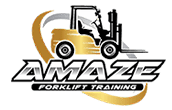In today’s fast-paced world of industries like warehouses, distribution centers, and factories, safety and efficiency are equally important. It doesn’t matter if you are an employee who wants to advance your career in material handling or an employer who wants to ensure that your staff fully complies with the law; we offer forklift operator licenses and Pallet Walkie Training. These are not just mandatory requirement of the law but crucial for a safe and more productive workplace.
In this article, we will discuss in detail everything you need to know about forklift training, forklift license, and pallet walkie equipment. We will also talk about how you get trained for a forklift license, and what is required to become a certified forklift operator.

Pallet Walkie Training
Before we dive deeper into Pallet Walkie Training, you need to know what a pallet walkie forklift is and why pallets are important in material handling.
A pallet walkie is also known as an electric walkie or pallet jack. It is an industrial truck that is pedestrian operated. Unlike a traditional sit-down forklift, the driver walks behind or alongside the equipment while operating. Pallet walkies are usually used for:
- Transporting pallets across short distances
- Loading and unloading trailers
- Navigating through narrow warehouse aisles that are narrow
- Handling lighter loads compared to normal forklifts
While they appear simpler than a forklift, if not used properly they may be hazardous if not used properly with caution. Pallet Walkie training is not only important for safety and to avoid damage, but also a safety law and requirement of occupational health.
What is Pallet Walkie Training?
Pallet Walkie Training is a customized training program designed to teach employees the safe and effective operation of electric walkie pallet jacks. Training typically includes theory (in-class teaching) and practical hands-on operation. At Amaze Forklift Training, the course will address the following topics:
- Workplace Safety Regulations: Familiarization with OSHA or local equivalent regulatory requirements for pedestrian-controlled trucks.
- Equipment Familiarization: Familiarization with the various components of a pallet walkie, such as the tiller arm, lift controls, horn, and emergency reverse button.
- Safe Operation Practices:
- Smooth starting and stopping
- Traveling through narrow aisles and corners
- Having a clear view when traveling with loads
- Correct load placement and balancing
- Hazard Recognition: Recognition of potential hazards such as pedestrians in the workplace, uneven flooring, or blind corners.
- Hands-On Experience: Practical operation in which operators demonstrate that they are able to safely operate the pallet walkie in the actual workplace conditions.
Evaluation and Certification: Operators are assessed through written testing and practical operation prior to being issued proof of training.
Who Needs Pallet Walkie Training?
If your job involves moving pallets with powered equipment—even if it seems less complicated than a forklift—you are required to be trained. Employers are responsible for ensuring all workers who operate powered industrial trucks are certified to do so. This applies to:
- Warehouse associates
- Shipping and receiving staff
- Stockroom employees
- Manufacturing plant workers
As per the safety regulation, every temporary or seasonal employee must complete Pallet Walkie Training and certification before operating the equipment.
Advantages of Pallet Walkie Training
For both employees and employers, the benefits of adequate training are considerable:
Career Advancement: Forklift Training provides various benefits in long-term employment opportunities with career advancement in warehousing and logistics.
Safety First: Minimizes workplace accidents, injuries, and damage to products.
Regulatory Compliance: It is a mandatory legal requirement to comply with the law and to avoid any fines and legal problems.
Productivity Gains: Professionally training and experience forklift operators can work quickly and with more efficiency.
Confidence Boost: In-depth knowledge and experience provide a confidence boost in employees, and they possess the ability to work safely.
Forklift Operator License: The Next Step
While Pallet Walkie Training is typically where most employees begin, many look to move up by obtaining a Forklift Operator License. A Forklift Operator License, also referred to as forklift certification, is proof that an operator has received the required training and evaluation to operate a forklift legally and safely.
What is a Forklift Operator License?
A Forklift Operator License is not a driver’s license that you obtain at the DMV. Instead, it is an employer or authorized training provider certification that you have completed training in compliance with safety standards. In most areas, the certification must be renewed every three years, or sooner if:
- The operator is observed operating in an unsafe manner
- The operator is involved in an accident or near-miss
- The operator is moved to a different type of forklift
Types of Forklifts Covered
At Amaze Forklift Training, we offer training for various types of forklift equipment. Depending on your training program, your forklift certification may include:
- Counterbalance Forklift
- Order Picker Forklift
- Pallet Walkie Rider
- Dock Stocker Training
- Arial Boom Lift Truck
- Narrow aisle training
- Scissor Lift Training
- Fall Protection Training
- First Aid and CPR
- Overhead Crane
- WHMIS Training
- TDG – Transportation of Dangerous Goods
It is important to note that Pallet Walkie Training is separate from forklift licensing. If your work involves both, you will need certification for each machine you operate.
